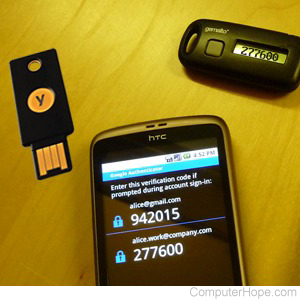Two-factor authentication

Two-factor authentication (2FA) is a technique used to increase the level of security by adding a step or component to the user verification process. Essentially, it requires the user to undergo two successful authentications before access is granted. Each of the required modes of authentication is usually one of the following.
- Something the user knows.
- Something the user physically holds.
- Something inseparable from the user's body.
Examples of two-factor authentication
While undergoing an ATM (automated teller machine) transaction, the user must insert a bank card (something the user physically holds) and enter a password (something the user knows). These two factors together make it extremely unlikely that an unauthorized user is accessing the bank account. Other examples could be using a password and a fingerprint scan, or a password and a one-time password.
Online two-factor authentication
Many online services use two-factor authentication by sending a text message to the user's phone with a unique code that must be entered if the computer is not recognized. This form of two-factor authentication prevents anyone without the phone from accessing an account and gives a significant boost to the level of security.
Some companies may also use a smartphone app, such as Google Authenticator, to generate random codes that verify the user without sending a text message.
Computer acronyms, Key fob, MFA, Password, Security terms, Two
